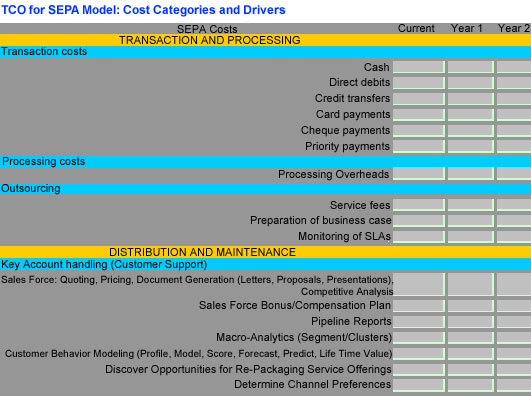TCO for SEPA: A Model
Abstract
The majority of European banks still strongly suspect that SEPA will negatively affect their revenue. This calls for a reference model that will identify and quantify the cost and revenue drivers of an institution across a five-year plan.
In a new report, , Celent examines the decision-making process of financial institutions regarding SEPA projects. Before looking at the macro figures of the economic impact of SEPA on the industry and financial markets, a financial institution must establish its level of interest and its economic rationale before embarking on a full-scale SEPA project.
There is general consensus that a real uptake to full-scale SEPA implementation will follow only after a clear definition of the migration deadlines from each of the 31 European Union countries involved. This responsibility falls on the shoulders of the EU regulators and local policymakers.
On the other side, banks and corporations will be better off by deciding on a strategy. If they want to reap the benefits of the incumbent payment schemes introduced by the SEPA rulebooks, they need to proactively approach the market with innovative products and services, the main targets being a larger share of business and new areas of influence.

"The value of the study consists in suggesting the foundation of a model that enables a single bank or corporation to assess and evaluate the cost/revenue profile of its own SEPA program," says Enrico Camerinelli, senior analyst with Celent's banking group and author of the report.
The report begins with an overview of the business background that justifies the need for such a model. It evaluates the current state and its limitations. The report goes on to describe a suggested end state. Finally, it highlights caveats and prescriptions.
The report is 60 pages long and contains 28 figures. A table of contents is available online.
Members of Celent's Corporate Banking research service can download the report electronically by clicking on the icon to the left. Non-members should contact info@celent.com for more information.
